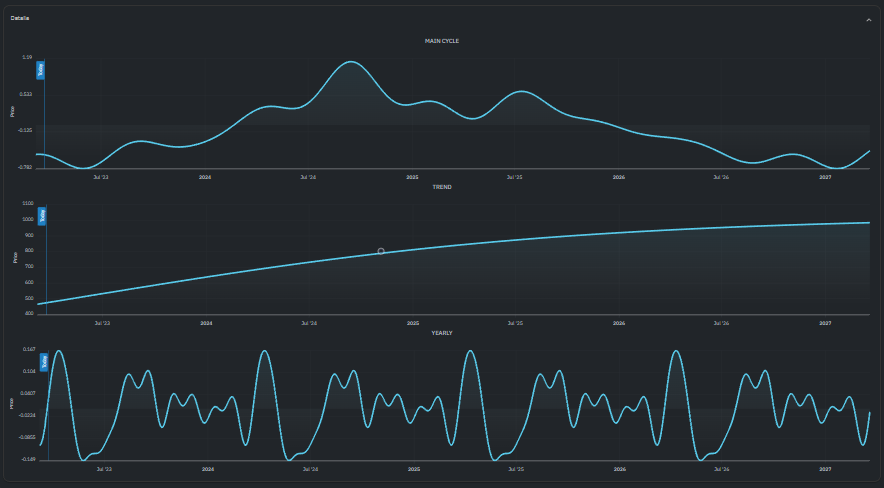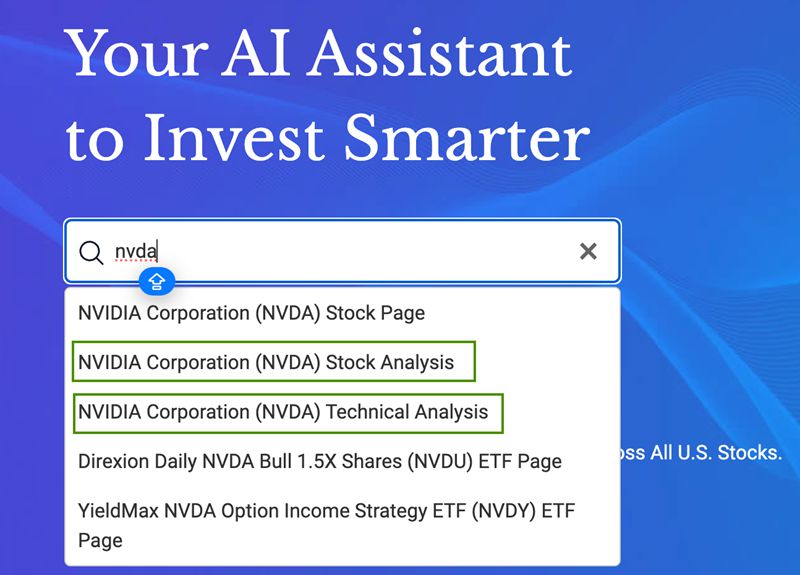20 Great Ways For Choosing AI Stock Predicting Websites
20 Great Ways For Choosing AI Stock Predicting Websites
Blog Article
Top 10 Tips On Assessing The Security And Privacy Of Ai Analysis And Stock Prediction Platforms
Because they often handle sensitive financial information, and even personal information, the security and protection of the data is crucial. Data breaches or misuses can result in reputational and financial losses. Here are the 10 best tips for evaluating the security and privacy of these platforms.
1. Check the encryption of data
Secure transmission of information Be sure that the platform is using secure protocols (e.g. SSL/TLS) for encryption of data transmitted between your devices and servers.
Security in the rest: Verify that sensitive information stored on platform servers is encrypted using high-quality encryption standards.
End-to-end encrypted communications: Be sure the platform you are using provides encryption that is end-to-end to protect any sensitive data.
2. Examine the authenticity of measures
Two-factor authentication (also known as copyright) is a great way to increase security.
Find out about biometric authentication options available for mobile applications (e.g. facial recognition or fingerprint).
Password policies - Verify that the platform has strong policies for passwords (e.g. length requirements or complexity requirements).
3. Verify if you are in Compliance
Financial regulations: Make sure that the platform is in compliance with the applicable financial regulations (e.g. SEC, FINRA or MiFID II).
Data protection laws. Verify compliance with the data privacy laws in your region (e.g. CCPA, GDPR) if it is applicable.
Audit certifications: Determine if your platform has been examined by a third-party auditor or certifications.
Review Data Access Controls
Role-based Access: Make sure your platform uses control based on role (RBAC) in order to restrict data access to users who are authorized.
Permission levels: Verify that you are able to give different permissions to members or members.
Activity monitoring Check to see whether your application is monitoring and tracking the user's activity.
5. Examine the vulnerability management
Regular updates - Make sure that your platform is updating its software regularly in order to patch any vulnerabilities.
Penetration test: Make sure that your system is tested regularly to find and fix any security vulnerabilities.
Bug bounty programs: Verify if there is a bug-bounty program available on the platform to motivate security researchers from the outside to disclose vulnerabilities.
6. Evaluate Data Privacy Policies
Transparency Read the privacy policy to find out what data you provide, used, or shared.
Data minimization: Make sure that the platform collects only the data needed for its functionality.
Third-party sharing: Check if the platform shares data with third parties and, if so, under what terms.
7. Secure API use is crucial to check
API security: Make sure the platform's API utilizes authenticated methods that are secure (e.g., OAuth, API keys) and encrypts data exchanges.
Rate-limiting: Verify whether the API has a limit on rate to prevent abuse and brute-force attacks.
Verify whether the platform has recorded API access to monitor and auditing, as well as reporting.
8. Evaluate Incident Response and Recovery
Plan for the response to incidents The platform has a solid plan to handle data breaches and security incidents.
Verify the platform's notification policy. Does it inform users immediately in the event of an incident?
Check the data backups as well as Disaster recovery plans.
9. Review Physical Security Measures
Security of the data center: Make sure the platform's servers are hosted in secure data centers that have physical security measures (e.g. surveillance, access controls).
Redundancy: Check whether the platform is equipped with redundant systems to ensure that data is available in the event of hardware failure.
Geographic distribution: To enhance resilience, make sure the data is distributed across multiple sites.
10. Test user privacy controls
Data deletion: Make sure the platform allows you to permanently erase your personal information when you stop using the service.
Privacy settings: Check if the platform provides privacy settings that control the data that is shared or visible.
Anonymization: Determine if data is being used to anonymize for machine learning or analytics.
Bonus Tips:
Review and feedback of users to evaluate the platform's security and privacy.
Trial period - Use the demo or trial version of the software to try out its security features and privacy controls.
Customer Support: Make sure that the platform has robust support for questions or concerns relating to security.
You can evaluate the privacy, security, and accuracy of AI platforms for trading stocks by following these suggestions. This will ensure that your financial information as well as personal information are secure. A secure platform protects your investments and creates trust in its services. Take a look at the most popular https://www.inciteai.com/mp for blog tips including copyright ai bot, ai stock trader, best stock analysis website, stock ai, ai trading bots, ai stock predictions, best ai copyright trading bot, best ai trading platform, ai for trading, ai stock picker and more.
Top 10 Tips For Evaluating The Speed And Latency Of Ai Platforms For Stock Prediction And Analyzing
Speed and latency are important factors when looking at AI stocks and analyzing trading platforms, particularly for active traders, algorithmic traders, and high-frequency traders. Milliseconds delay could have a negative impact on trading execution. These are the top 10 tips to evaluate the speed and latency of these platforms:
1. Data feeds that are real-time: How do you analyze them
Data delivery: Ensure that the platform is able to deliver data in real-time, with a minimum delay (e.g. less than milliseconds).
Data source proximity - Look to see if the servers of your platform are within important exchanges. This will cut down on data transmission times.
Data compression: Find out whether your platform uses effective data compression techniques in order to accelerate data delivery.
2. Test Trade Execution Rate
Processing orders: The platform's ability to process and execute trades swiftly when an order is placed.
Direct Market Access (DMA) Make sure that the platform supports DMA. This lets orders go directly to the exchange without the need for intermediaries.
Review the execution reports to determine the timestamps on order confirmation fill, submission and order confirmation.
3. Assess Platform Responsiveness
User interface (UI also known as speed of the user interface) It is an indicator of how fast the platform's user interface responds to inputs you type in (e.g. pressing buttons or loading graphs).
Chart updates: Verify that charts and visualisations update in real-time and without delay.
Performance of mobile apps: When using a mobile app make sure it is as fast as the desktop version.
4. Look for infrastructure with low latency.
Server Locations: Use servers that are low-latency, and located near major financial centers, or exchanges.
Co-location services: Find out whether your exchange offers this option. This allows you to host trading algorithms on servers close to the exchange.
High-speed network: Check if the platform utilizes high-speed fibre-optic networks, or any other low latency technology.
5. Evaluation of Simulation and Backtesting Speed
Test how fast the platform analyses and processes old data.
Simulation latency: Verify that the software can simulate trading in real time without any noticeable delay.
Parallel processing: Ensure that the platform is using parallel processing, or distributed computing, to speed the process of complex calculations.
6. Check API Latency
API responses: Find out the speed at which APIs can respond to queries (e.g., fetching information from the platform, or placing orders).
Rate limits. Check to see whether there are acceptable limits for the API. This will assist in avoiding delays in high-frequency transactions.
WebSocket support: Check whether the platform supports WebSocket protocols to support real-time, low-latency streaming of data.
7. Test platform stability under load
High-volume Trading: Simulate large numbers of trading scenarios to see if the platform is reliable and stable.
Check the platform during times when there is a lot of volatility on the market to make sure it can handle rapid changes in price.
Test your strategy for stress: Find out whether the platform allows you to test your strategy in extreme circumstances.
8. Examine the network and connectivity
Speed requirements for Internet: Make sure your internet connection is running at the recommended speed of your platform.
Redundant connection: Examine to see if there are redundant connections in the network.
VPN latency: If you use a VPN be sure to check whether it has a significant amount of latency. Also, determine if the provider provides alternatives.
9. Look for Speed Enhancement Features
Pre-trade Analyses: Make sure that the platform has pre-trade analysis to improve the speed of execution and processing orders.
Smart Order Routing (SOR). Make sure that the platform uses SOR in order to find the quickest and most cost efficient execution locations.
Use the tools available on the platform to monitor and analyse the latency in real-time.
10. Review Feedback from Users and Benchmarks
User reviews: Conduct user research to assess the platform's speed and latency.
Third-party benchmarks by third parties. Find benchmarks that are independent, or reviews that compare the speed of a platform with other platforms.
Case studies: Ask the platform whether it has case studies or testimonials that demonstrate its low latency capabilities.
Bonus Tips:
Use the free trial or demo period to test your platform’s speed and latency under real-world conditions.
Customer support: Check to determine if the platform has assistance with issues related to latency or for optimization.
Hardware requirements: Find out if you need specific hardware for optimal performance (e.g. high-performance computers).
With these suggestions that you will be able to assess the performance and speed of AI stock-predicting and analyzing trading platforms and ensure that you select the best platform for your trading needs and minimizes delays. Low latency is especially crucial for algorithmic and high-frequency traders, where even small delays can significantly impact profits. Check out the best from this source for ai trade for blog examples including best ai for trading, invest in ai stocks, best stock analysis website, ai stock trading app, ai for investing, ai investing tools, investment ai, ai stock trader, best free copyright trading bot, best ai for trading and more.